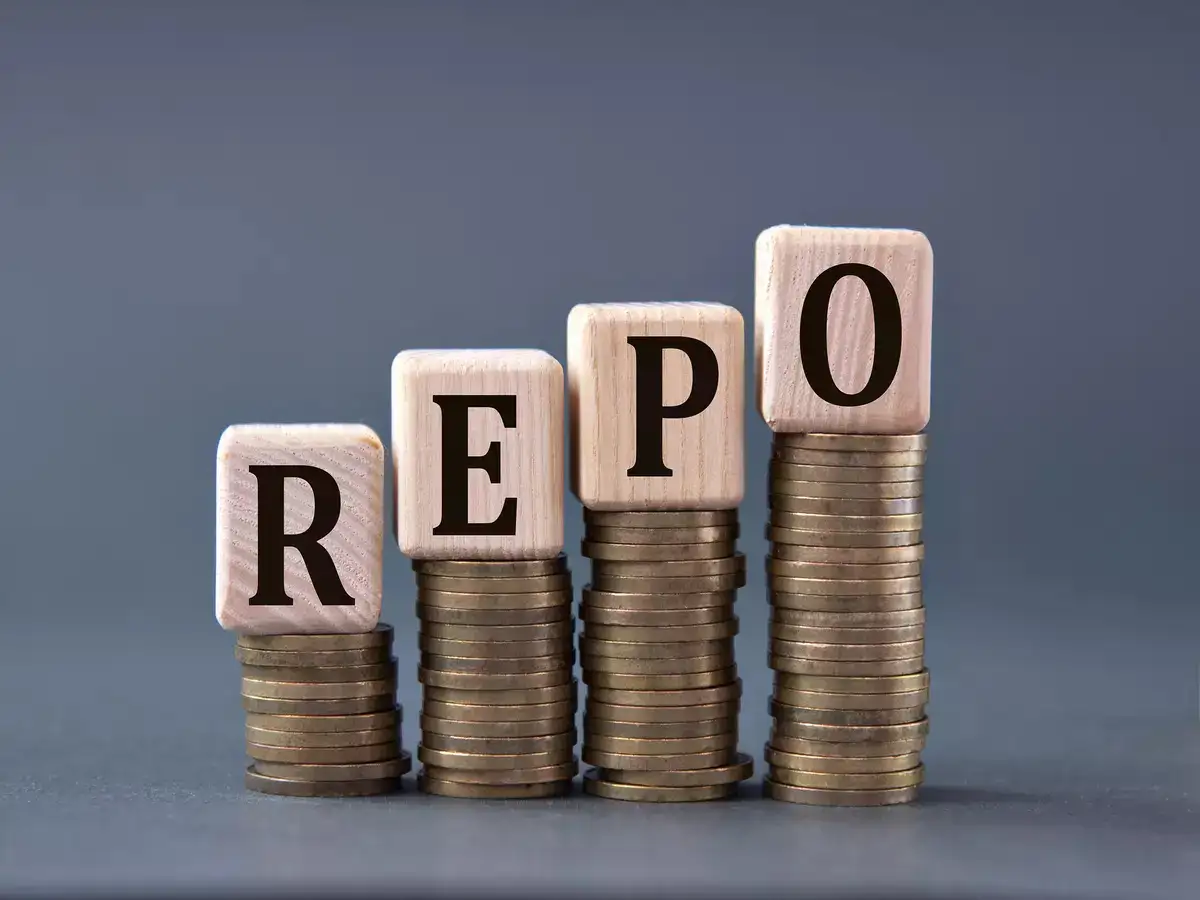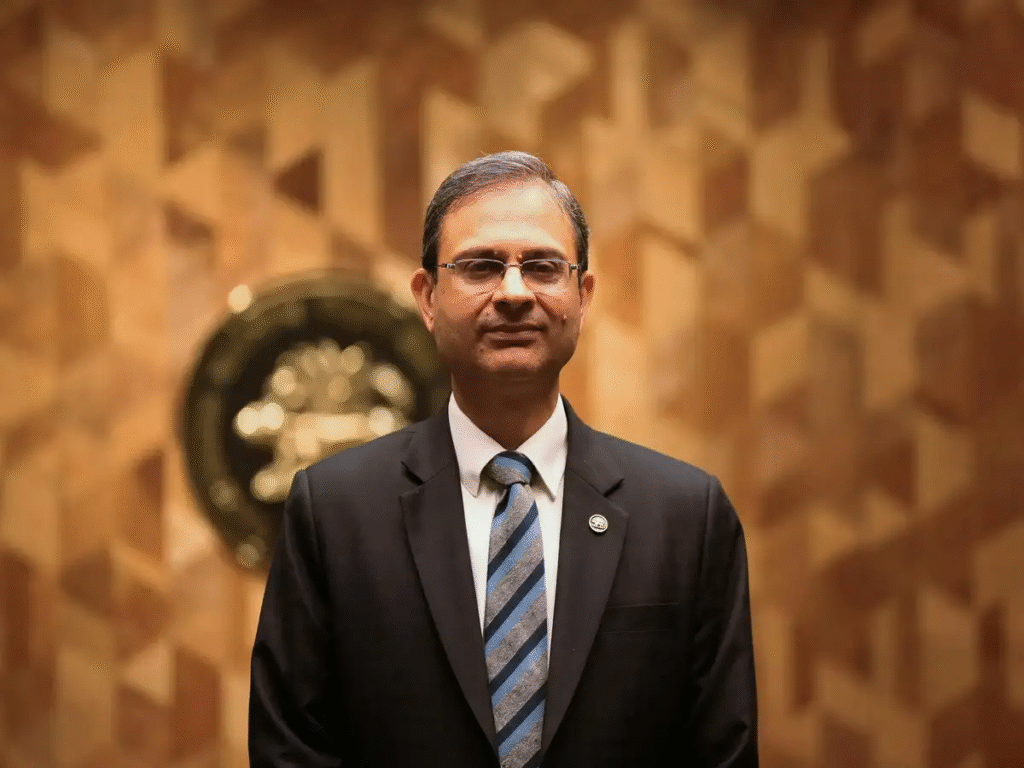RBI Repo Rate 2025: Why the Central Bank Chose to Stay Put Amid Global Tensions

The RBI repo rate 2025 decision is in—and it’s a no-move move. The Reserve Bank of India (RBI) has chosen to keep the repo rate fixed at 5.5%, signaling caution in the face of ongoing global trade uncertainty and tariff threats from the United States.
In simple terms, the central bank is saying: “Let’s not shake the boat just yet.” But why does this matter, and how does it affect everyday people like you and me?
What Is the Repo Rate, and Why Should You Care?
Before we dive deeper, let’s break it down. The repo rate is the interest rate at which the RBI lends money to commercial banks. When this rate goes down, borrowing gets cheaper, and the economy gets a boost. When it goes up, it tightens things to control inflation.
So when the RBI repo rate 2025 is held steady, it tells us the RBI wants to maintain a balance between supporting growth and controlling inflation.
Why the RBI Held the Repo Rate Steady
The RBI isn’t acting on impulse here. Several key factors are at play:
- Volatility in the rupee, especially after Trump’s latest tariff threats on Indian exports.
- Unpredictable global trade negotiations still playing out.
- Inflation remains within limits, but there’s potential for it to rise again.
- The RBI wants to give previous rate cuts more time to work their way through the system.
Put simply, the RBI repo rate 2025 decision reflects a strategy of “wait and watch”.
Trump’s Tariff Threat: A Speed Bump for the Rupee
Just a day before the announcement, President Donald Trump renewed threats to hike tariffs on Indian goods. That alone caused the rupee to dip 16 paise, which spooked markets and put additional pressure on the RBI.
These types of geopolitical jolts are exactly why the RBI is opting for caution when making decisions on the RBI repo rate 2025.
Inflation Under Control… But For How Long?
RBI Governor Sanjay Malhotra explained that while headline inflation is currently low, thanks to erratic food prices, the core inflation (which excludes food and fuel) has seen a slight uptick, mainly due to higher gold prices.
The RBI now forecasts that retail inflation could rise above 4% in the January–March quarter of 2025. In this environment, tweaking the RBI repo rate 2025 could trigger more harm than help.
India’s Growth Outlook for 2025: Optimism with Caution
Despite the external headwinds, the Indian economy is still expected to hold steady. The RBI projects GDP growth at 6.5% for the fiscal year, broken down like this:
- Q1: 6.5%
- Q2: 6.7%
- Q3: 6.6%
- Q4: 6.3%
Governor Malhotra said the RBI has already taken “decisive, forward-looking steps” to support the economy, which makes maintaining the RBI repo rate 2025 at 5.5% a logical next step.
Trade Tensions Still Cast a Shadow
While geopolitical uncertainties may have somewhat eased, global trade challenges are still very much alive. Ongoing disputes, tariffs, and slow trade negotiations are creating a drag on global markets.
The RBI repo rate 2025 decision reflects the central bank’s concerns over these unresolved issues, particularly how they might affect India’s export-driven sectors.

How This Impacts Borrowers and Homebuyers
Here’s the good news: with the RBI repo rate 2025 unchanged, your EMIs are likely to stay stable—at least for a while. This is a relief for borrowers, especially in the home loan and personal loan segments.
Amit Prakash Singh, co-founder of Square Yards, said this stable environment gives banks a chance to fully transmit earlier rate cuts, helping consumers benefit from lower interest rates.
A Boost for Real Estate and Mid-Income Buyers
This is especially encouraging for the real estate sector, which relies heavily on steady interest rates. Vimal Nadar, National Director at Colliers India, noted that this decision helps affordable and mid-income housing segments, giving both developers and buyers more confidence.
In short, a stable RBI repo rate 2025 = a more predictable property market.
What Should You Watch For Next?
If you’re a borrower, investor, policymaker, or just someone trying to make sense of the financial world, here’s what to keep an eye on:
- Inflation trends in the coming months
- Global trade talks, especially involving the U.S.
- The rupee’s movement in response to external pressures
- How quickly banks pass on previous rate cuts
The RBI repo rate 2025 might not change again soon, but the world around it certainly will.
Transmission of Past Rate Cuts Still Ongoing
If you’re wondering why your loan interest rate hasn’t dropped yet, here’s the thing: monetary policy takes time to ripple through the system. Banks are still adjusting to past rate cuts, and the RBI wants to see those fully play out before making any new moves.
So even though the RBI repo rate 2025 is unchanged now, you could still see the effects of earlier cuts in the coming months.
Read More: IndusInd Bank Shares Surge Nearly 6% As Rajiv Anand Steps In As New CEO
Conclusion
At a time when global headlines are rewriting the rules every day, the RBI’s decision to hold the repo rate at 5.5% shows maturity, caution, and confidence in India’s medium-term prospects.
The RBI repo rate 2025 may not have changed, but the message is clear: “Let’s give the economy some space to catch up and adapt.”



